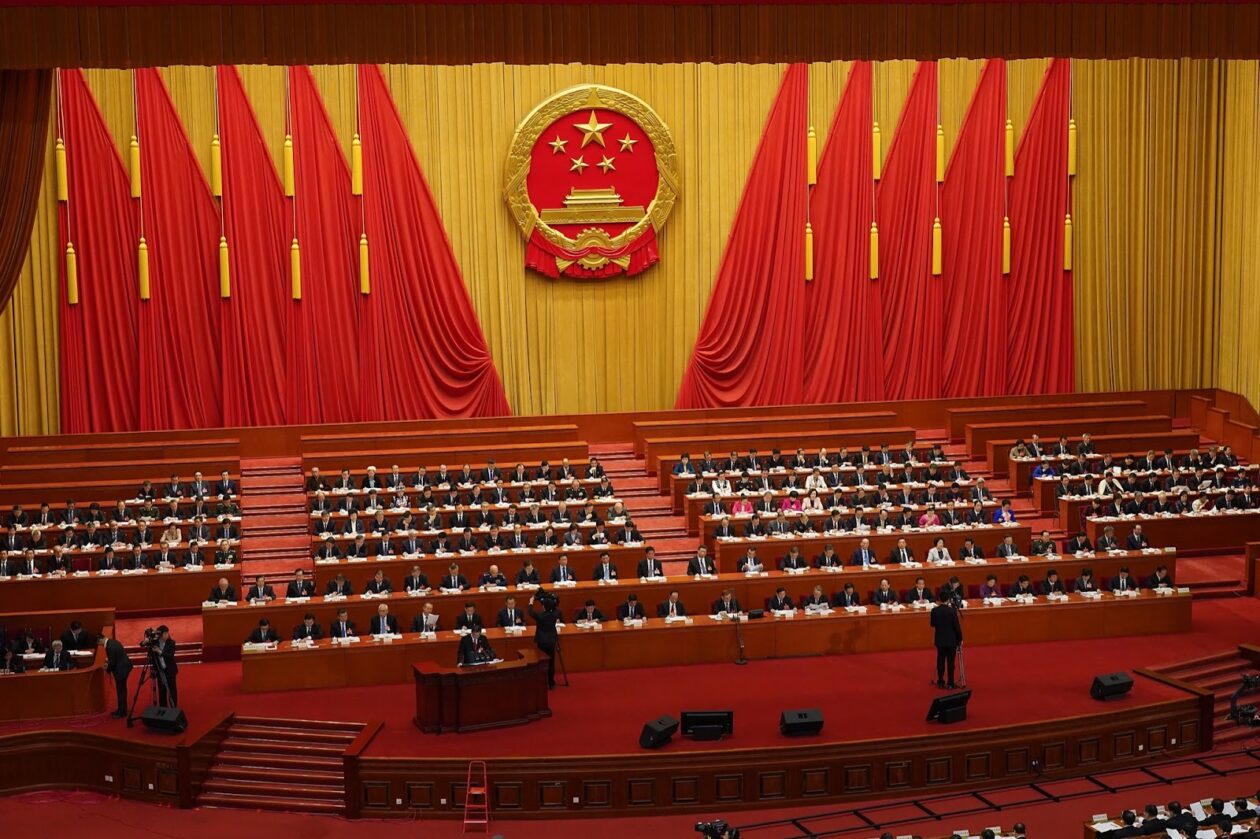In this issue
- Silvergate: Pearly gates?
- Lido DAO: Fake news
- China’s two sessions: Digital drive
From the Editor’s Desk
Dear Reader,
It’s often said in business that if you can’t measure it, you can’t manage it.
This seemingly self-evident observation has garnered supporters and skeptics, perhaps in equal numbers, but if anyone thinks it doesn’t hold true for such a novel, sophisticated and data-driven field as digital assets, they’ve got another thing coming.
And that thing, this week, is the Forkast 500 NFT Index.
As we prepare to unveil this new indicator — the first in our series of Forkast Labs indexes, which will track thousands of non-fungible token products and provide a solid measure of market performance — there’s scarcely been a better time for a dose of clarity in the digital asset industry.
In recent days, we have identified almost US$1 billion of market-bloating wash-trading that’s distorted the picture of the NFT sector that investors are seeing, and have shown instead that the market has softened since its year-to-date high in January.
This is the type of sorely-needed analytical rigor that the Forkast 500 NFT Index — and the other members of our forthcoming family of indexes — will bring to assessments of digital asset markets.
The talk of bankruptcy that’s engulfed crypto industry heavyweight Silvergate Capital in the past week amid a distinct whiff of possible sharp practices, and false rumors about U.S. Securities and Exchange Commission charge notices supposedly sent to Lido DAO and other industry players, only underscore the sector’s need for impartial, holistic and reliable metrics and disclosure such as we are set to begin providing.
It’s difficult to imagine the traditional finance sector functioning in the absence of such measurement tools and information quality standards. As digital assets make inroads into markets and increasingly become the norm, isn’t finance’s newest and most innovative iteration equally deserving of such metrics and standards?
That’s the question we asked ourselves, and the question to which over the coming days, months and years we will be providing solid, actionable answers.
Until the next time,
Angie Lau,
Founder and Editor-in-Chief
Forkast
1. Slammed

By the numbers: Silvergate — 5,000% increase in Google search volume.
Silvergate Bank, a cryptocurrency industry-focused lender based in San Diego, California, has released troubling information about its financial status and shut down its crypto payment services, triggering a selloff in the crypto market.
- Silvergate Capital, the bank’s holding company, last week notified the U.S. Securities and Exchange Commission that it would have to delay filing its 10-K financial report due to business and regulatory challenges, and that it was evaluating “its ability to continue as a going concern.”
- Silvergate Bank also suspended the Silvergate Exchange Network, a service that allowed clients to make transactions around the clock that was used by institutional investors to move money to crypto exchanges.
- Silvergate Capital’s stock price slumped more than 60% over the past week and is down more than 95% over the past year.
- As a Federal Reserve member bank, Silvergate positioned itself as a gateway connecting cryptocurrencies and traditional finance, and it has been providing banking services to crypto exchanges and firms since 2014.
- Silvergate was hit hard by the implosion of crypto exchange FTX and the massive withdrawals that followed, recording a 73% decrease in non-interest-bearing deposits between Sept. 30 and Dec. 30 last year as crypto investors left the market. In January, Silvergate Capital reported a US$1 billion loss for the fourth quarter of 2022 and laid off 40% of its staff.
- Silvergate is also being investigated by U.S. prosecutors over its ties with FTX and the exchange’s brokerage arm, Alameda Research.
- Since Silvergate’s disclosure, multiple crypto firms have announced that they are cutting ties with Silvergate, including Circle, Crypto.com, Coinbase, Gemini, Paxos, Bitstamp and Galaxy Digital.
- Silvergate’s woes have triggered bearish crypto market sentiment that has seen a drop in total crypto market cap from US$1.13 trillion on March 1 to US$1.06 trillion on March 8, according to data from CoinGecko.
Forkast.Insights | What does it mean?
Silvergate’s potential collapse is worrying not just for crypto exchanges, but the industry more broadly.
Silvergate had all the trappings and supposed guardrails of a regulated bank. It had been licensed by the Federal Deposit Insurance Corp., the Federal Reserve, and the California Department of Financial Protection and Innovation, and it had found a way of working in crypto without having to dabble in the crypto market itself.
The bank had developed the Silvergate Exchange Network, its signature real-time payment system that allowed crypto exchanges and institutions to swap crypto for fiat currency, which it used to invest in treasuries, an asset that could hardly be further from the volatility of the crypto market.
The sudden change in Silvergate’s fortunes, and the fact that questions have arisen concerning its links to the goings on at FTX and Alameda Research, brings with it renewed official scrutiny in the U.S.
At the beginning of the year, three of America’s most important finance sector regulators issued a statement saying they were resolved to stop crypto volatility from finding its way onto the balance sheets of traditional banks.
Silvergate has become a litmus test for that resolve, and it seems likely that all banks with ties to crypto will find themselves under increased scrutiny. Analysts now believe there’s a serious push in the U.S. underway to get crypto cut off from the country’s banking system.
2. Loose talk

By the numbers: LDO — 1,700% increase in Google search volume.
Staking protocol Lido DAO’s LDO token fell 16.5% last week following false rumors spread by podcaster David Hoffmann that the staking protocol had received a Wells Notice — a letter from the U.S. Securities and Exchange Commission (SEC) at the end of an investigation, informing the recipient that the agency intends to bring enforcement action against it. LDO has since recovered and was changing hands at US$2.53 as of midweek in Asia, in the range in which it has traded for much of this year, according to CoinGecko data.
- “Wells Notices got shot out across the industry, in the last week,” said Hoffmann on the Bankless Show podcast on March 3. “I think Lido got one,” he added, adding that the assertion was unverified.
- Hoffmann later corrected his allegations, saying on Twitter: “Talked with a Lido dude he said Lido did indeed not receive [a notice]. Sorry for spreading a rumor, I thought it might have been news.”
- It would be difficult for the SEC to serve Lido with a Wells Notice, as the staking protocol is operated by a decentralized autonomous organization (DAO) that lacks a central leadership hierarchy.
- The rumors emerged amid a wider crackdown on crypto after crypto exchange Kraken agreed to shut down its staking services and pay US$30 million last month as part of a settlement with the SEC over two Kraken subsidiaries’ alleged failures to register staking products.
- Paxos, the issuer of Binance’s BUSD stablecoin, also received a Wells Notice, alleging that its issuance of BUSD involved an unregistered security that violated investor protection laws.
- Lido is the largest liquid staking protocol on Ethereum, with more than US$9 billion worth of total value locked, according to DefiLlama. The protocol accounts for more than 33% of total staked Ether on the Beacon Chain.
- Lido DAO had generated significant interest in the run-up to Ethereum’s upcoming Shanghai upgrade (EIP-4895), now scheduled for April, which is set to allow validators to unlock their staked Ether and withdraw their assets from the Beacon Chain for the first time since staking was enabled in 2020.
Forkast.Insights | What does it mean?
The crypto industry is looking over its shoulder — with good reason. U.S. regulators are in hot pursuit to bring the sector to heel.
Although the rumors about Lido DAO turned out to be false, the more intriguing point is that they were sufficiently believable to generate concerns among investors. As the Silvergate saga and others wear on, expect more rumors — and more evidence — that regulation is coming for crypto companies, whether they’re ready or not.
The bigger question is whether law enforcement will come for DAOs. Recent history suggests they might. Last September, the U.S. Commodity Futures Trading Commission filed a lawsuit against Ooki DAO, a project designed to decentralize the bZx protocol, for violations of the Commodity Exchange Act.
The CFTC believed Ooki was unincorporated and that it had legal liability for the company to which it was attached. That set a precedent that appears to have given credence to the rumors about Lido. Lido may so far have escaped legal consequences, but it seems that DAOs are no longer beyond scrutiny.
3. Tech boost

China’s “two sessions” — the concurrent annual meetings of the National People’s Congress (NPC) and the Chinese People’s Political Consultative Conference (CPPCC) and China’s most important annual political gatherings — opened last week in Beijing. On the agenda is China’s expected unveiling of initiatives to build the country’s digital economy, in which Web3 will have a critical role to play.
- Last month, China revealed a national plan for its digital development by 2035 that aims to integrate digital technologies into its real economy and governance. Prior to the plan, China President Xi Jinping had written in a January article that technologies such as blockchain, artificial intelligence, 5G and cloud computing would be major drivers of the nation’s strength in the global economy.
- The digital economy and Web3 have entered the lexicon of multiple delegates to the two sessions. Shao Zhiqing, a Shanghai-based CPPCC member, told local media last week that he would propose the construction of a regulated market for data that would require blockchain-based infrastructure to secure data ownership and trading.
- China has started to trial a governance framework to treat data as an economic resource like capital or land. Last month, authorities in the southern city of Shenzhen issued a draft proposal for data ownership registration that plans to preserve all registration information on a blockchain for a minimum of 30 years.
- Fu Xiguo, a member of the NPC, told local media that he would propose amending the law governing China’s central bank to give e-CNY — China’s central bank digital currency — the same legal status as its analog counterpart and revise the digital currency’s uses and issuance. Wu Yiqiang, a CPPCC member, said he would propose expanding e-CNY’s adoption for cross-border payments.
- Separately from its blockchain-related proposals, Chinese authorities set a GDP growth target of 5% for 2023, lower than economists’ expectations, which could contribute to negative sentiment toward risk assets such as cryptocurrencies.
- Despite China’s ban on crypto transactions, the country’s authorities regard blockchain technology as key to its digital infrastructure, and the government has been investing heavily in the industry. Meanwhile, the country is also facing challenges related to Web3 development, ranging from outflows of non-fungible token firms to the sluggish adoption of e-CNY.
- The two sessions are set to run for about two weeks, with more Web3-related proposals expected to be made.
Forkast.Insights | What does it mean?
China’s digitalization plan is something the country has worked on for years, and the current show of interest is not the first time blockchain technology has made the agenda. Last year during the two sessions, metaverse development was in the spotlight. This year, it seems all eyes were on China’s digitalization strategy, with some discussions surrounding e-CNY and Web 3.0.
The U.S. is watching China’s tech advances closely. Yaya Fanusie, director of policy for anti-money laundering and cyber-risk at the Washington-based Crypto Council for Innovation, told Forkast this week that there was increased attention in Washington to what has been happening with China and blockchain. Fanusie, a former Central Intelligence Agency analyst, added that most U.S. attention is focused on e-CNY.
It is expected that China’s central bank digital currency will play an important role in the country’s plan to become even more digital. China already has a highly developed cashless economy in which residents are accustomed to paying for goods and services through WeChat and Alipay. The easiest way for the central government to boost wider adoption of e-CNY would be through cooperating with the two digital payment giants.
Self-reliance is also something China is pursuing. Iris Pang, chief economist at think tank ING Economics, wrote in a report last month that self-reliance in advanced technology was a key topic in meetings of top leaders, and that the government is expected to pour more funding into research and development to achieve it.
China’s Ministry of Finance will allocate 6.5 billion yuan (US$937.7 million), an increase of 2 billion yuan, for scientific and technological advances at the local level to boost regional hubs for innovation, state media reported this week, citing the ministry’s draft budget for 2023.
China has set a more realistic GDP growth target, yet it seems to be maintaining solid investment in technology, one result of which seems not unlikely to yield more uses for blockchain at both the national and local levels this year.




